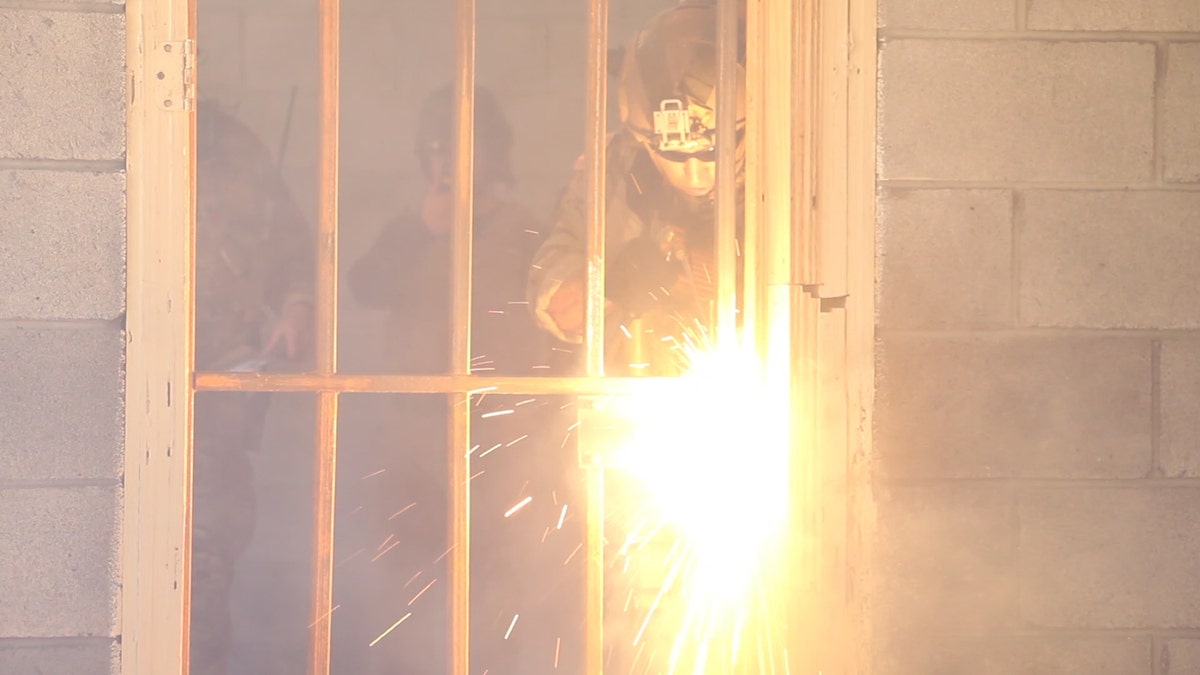
(Staff. Sgt. Jacob Braman, U.S. Army)
Ultra-elite Special Operations teams took part in the first-ever U.S. Army Special Operations Command International Urban Assault Challenge last week.
So when the U.S. needs an assault team to tackle a target in an urban setting … who is the best Special Operations Urban Assaulter we’ve got? This competition put the best to the test.
The ultra-intense challenge played out over four days at Fort Bragg, North Carolina. The U.S. Army Special Forces Advanced Reconnaissance Target Analysis Exploitation Techniques Cadre devised and conducted the extremely tough competition.
The challenge was designed to give operators the chance to test their experience and weapons proficiency.
Related: Top special operations snipers go head to head
And of course, it provided the chance to see how the best of the best truly stack up. It was a unique opportunity to see how an operator’s tactical decision-making ability measures up against other assault experts from Special Operations.

(Staff. Sgt. Jacob Braman, U.S. Army)
Six teams from United States Army Special Operations Command participated. Each team comprised of four operators. Throughout the week, the battle-hardened commandos showcased their elite capabilities.
Why are urban assault skills important?
The U.S. Special Forces ceaselessly refine their urban assault performance. It’s a key skill set for effectively and efficiently conducting surgical strike operations against our nation’s enemies. It also plays a vital role safeguarding U.S. soldiers.
The competition events were designed to accurately depict the real-world challenges assaulters can face on the battlefield.
Related: 6 top picks in elite sniper tech
Urban assault is extremely complicated and difficult to conduct. Success relies on a series of life-or-death decisions. The environment, your team-mates, and the enemy's actions are all factors in making ultra-high stakes split-second judgment calls.
By carefully replicating the challenges assault teams face, the competition tested each operator’s ability to make instantaneous decisions.
What sort of events?
Teams competed in 20 combat-oriented events, which tested their elite skills and experience, as well as the effectiveness of their training.
How are the events created? The event designers start with a specific learning objective in mind. The event is then designed to test an assaulter’s ability to execute that objective. Events also require operators to persevere through the unknown, event after event.
Related: New tech gives US helicopter pilots 'Superman-style' vision
One event was the traditional shooting drill with an AK-47. Competitors had to recover an enemy weapon system from the battlefield. They then had to use it to accurately engage targets as quickly as possible. The event tested their ability to adapt, be field expedient, effective and accurate.

(Staff. Sgt. Jacob Braman, U.S. Army)
The night "scrambler" was another test of elite skills that competitors tackled. Using their unit’s night vision equipment, competitors had to accurately engage targets at varying distances, from 5 meters to 150 meters. This event tested, refined, and challenged each competitor's ability to operate at night – a very common requirement downrange.
So who was the best of the best?
The 1st Special Forces Group team took first place in the inaugural competition. The winners were announced at a small ceremony at Range 37, Fort Bragg, North Carolina on March 31.
